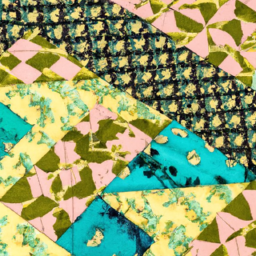
Quilting, the art of stitching together layers of fabric to create a padded material, has a rich history that spans centuries. While the exact origins of quilting are difficult to determine, evidence suggests that it dates back thousands of years. Quilts have not only served as functional bedding but also as decorative works of art, showcasing the creativity and skill of their makers.
One of the earliest known quilted items was discovered in an ancient Egyptian tomb dating back to 3400 BCE. The quilt was made of linen and padded with reed fibers, providing evidence of early quilting techniques. Throughout history, quilting has been practiced in various cultures around the world, each with its own unique styles and motifs.
In medieval Europe, quilted garments were worn as a form of armor, offering protection in battle. The Crusaders also brought back quilted items from the Middle East, introducing new quilting techniques and designs to Europe. During the Renaissance, quilting became more prevalent in Europe, with elaborate quilted textiles being used in clothing, wall hangings, and bedding.
Quilting gained popularity in America during the colonial era when European settlers brought the craft with them. In the early days, quilts were made out of necessity, using scraps of fabric and leftover materials. Quilting served as an essential skill for survival, providing warmth and comfort in the harsh winters.
“Quilting has always been more than just sewing fabric together; it is a beautiful form of self-expression passed down through generations.”
The Industrial Revolution in the 18th century brought changes to the quilting process, with the invention of sewing machines simplifying the stitching process. Nonetheless, quilting remained a cherished tradition, often seen as a communal activity where women would gather to stitch, share stories, and create lasting bonds.
As time progressed, quilting evolved into an art form, with quilters taking inspiration from various sources such as nature, historical events, and personal experiences. It became a way for individuals to showcase their creativity and preserve cultural heritage through fabric.
Today, quilting continues to thrive as a beloved craft. Quilting guilds and communities exist worldwide, bringing together enthusiasts who share their knowledge and passion. Modern technology and innovative techniques have further expanded the possibilities of quilting, allowing makers to experiment with new materials and styles.
From its humble beginnings in ancient civilizations to its modern resurgence, quilting remains a testament to human ingenuity and the power of creativity. Whether it’s an heirloom quilt passed down through generations or a newly crafted masterpiece, quilts hold a special place in our hearts as symbols of warmth, love, and artistry.
Fascinating post!
Gianna Martinez: Very interesting read!
Wow! This article is sure to provide us with an incredible look into the history of quilting. It’s amazing to think of how far back it goes and how it has evolved over time!
Absolutely! Quilting is an art that is full of history and culture, and it’s great to learn more about it.